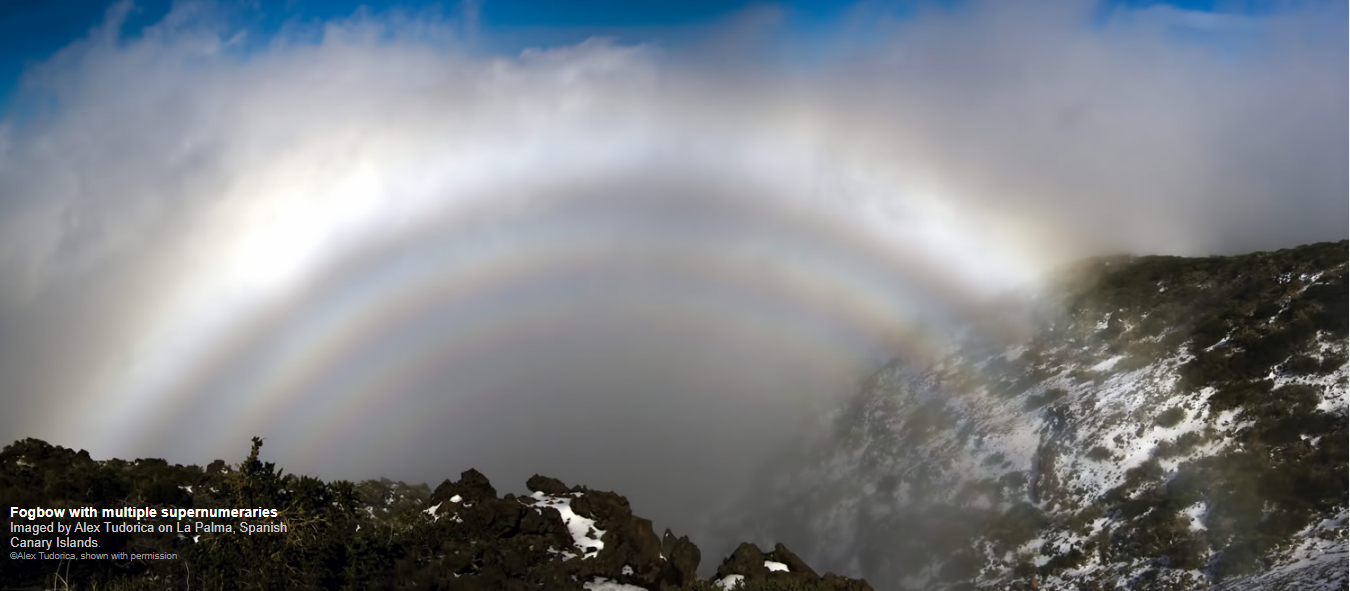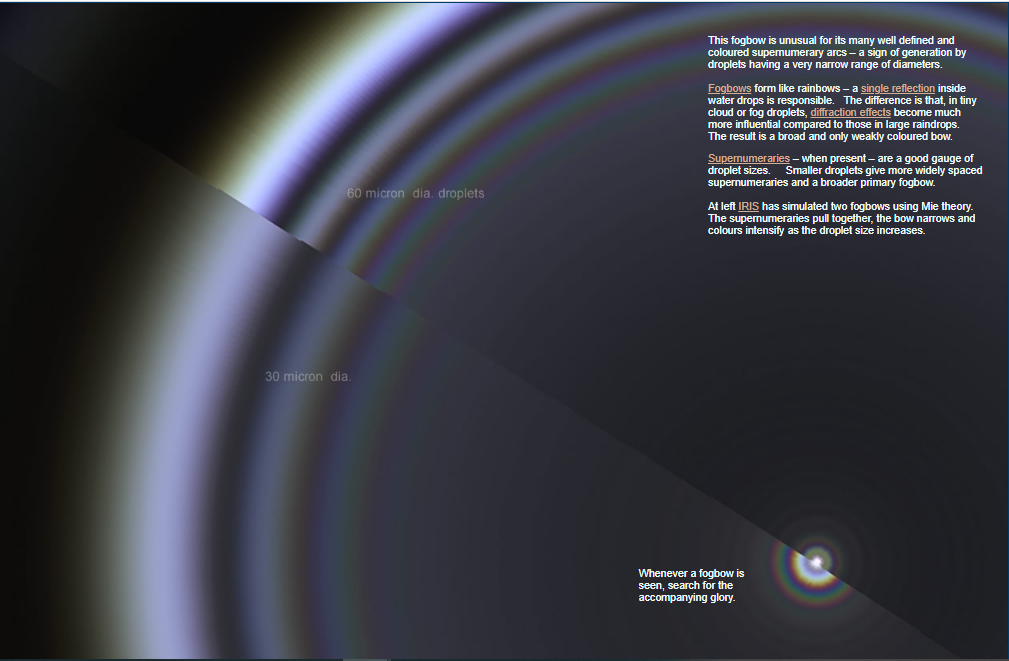OPOD - Fogbows and supernumeraries
OPOD - Fogbows and Supernumeraries: Exploring the Enigmatic Optical Phenomena
Have you ever witnessed a fogbow, that ethereal cousin of the rainbow, on a misty morning? While fogbows may resemble rainbows at first glance, they possess their own unique characteristics and captivating beauty. In this article, we will delve into the fascinating world of fogbows and their enigmatic companions, supernumeraries. Join us as we uncover the science behind these atmospheric optical phenomena and explore their mesmerizing allure.
The Formation of Fogbows
Fogbows, much like rainbows, are formed through the interaction of sunlight with water droplets suspended in the air. However, there are some key differences that give fogbows their distinct appearance. While rainbows are created by a single internal reflection within raindrops, fogbows are generated by multiple internal reflections within tiny cloud or fog droplets. This distinction leads to the emergence of unique optical effects.
The Influence of Diffraction
In the realm of fogbows, diffraction effects reign supreme. Due to the smaller size of cloud or fog droplets compared to raindrops, diffraction becomes more pronounced and influential. As a result, fogbows appear broader and less vividly colored compared to their rainbow counterparts. The diffraction of light within these tiny droplets causes the light to spread out and creates a soft, pale arc in the sky.
Unveiling the Supernumeraries
One of the most intriguing aspects of fogbows is the presence of supernumeraries. These additional faint arcs, located on the inside edge of the primary fogbow, add a touch of magic to the already enchanting display. Supernumeraries are formed due to interference between light waves diffracted by droplets of varying sizes. They serve as a visual indicator of the droplet sizes present in the fog or cloud.
- Smaller droplets result in more widely spaced supernumeraries, leading to a broader primary fogbow.
- Larger droplets cause the supernumeraries to converge, narrowing the bow and intensifying the colors.
Simulating Fogbows: Insights from Mie Theory
To gain a deeper understanding of fogbows, scientists have turned to simulations using Mie theory. By employing this mathematical framework, researchers can model the behavior of light interacting with spherical droplets. These simulations have revealed fascinating insights into the formation of fogbows and the behavior of supernumeraries.
The Quest for the Glory
When observing a fogbow, it is worth keeping an eye out for its ethereal companion, the glory. The glory is a circular optical phenomenon that appears as a set of colored rings surrounding the shadow of the observer's head. It is caused by the diffraction, reflection, and interference of light within small water droplets or mist. The presence of a glory alongside a fogbow creates a truly captivating atmospheric spectacle.
In conclusion, fogbows and their mesmerizing supernumeraries offer a glimpse into the intricate interplay between light and water droplets in our atmosphere. These optical phenomena, shaped by diffraction and interference effects, grace our skies with their subtle beauty. So, the next time you find yourself in the midst of a foggy morning or a mist-laden landscape, keep your eyes peeled for the elusive fogbow and its enchanting supernumeraries. Immerse yourself in the wonders of atmospheric optics and marvel at the hidden secrets revealed by nature's light show.

Fogbow with multiple supernumeraries
Imaged by Alex Tudorica on La Palma, Spanish Canary Islands.
©Alex Tudorica, shown with permission

This fogbow is unusual for its many well defined and coloured supernumerary arcs – a sign of generation by droplets having a very narrow range of diameters.
Fogbows form like rainbows – a single reflection inside water drops is responsible. The difference is that, in tiny cloud or fog droplets, diffraction effects become much more influential compared to those in large raindrops. The result is a broad and only weakly coloured bow.
Supernumeraries – when present – are a good gauge of droplet sizes. Smaller droplets give more widely spaced supernumeraries and a broader primary fogbow.
At left IRIS has simulated two fogbows using Mie theory. The supernumeraries pull together, the bow narrows and colours intensify as the droplet size increases.
Whenever a fogbow is seen, search for the accompanying glory.
Note: this article has been automatically converted from the old site and may not appear as intended. You can find the original article here.
Reference Atmospheric Optics
If you use any of the definitions, information, or data presented on Atmospheric Optics, please copy the link or reference below to properly credit us as the reference source. Thank you!
-
<a href="https://atoptics.co.uk/blog/opod-fogbows-and-supernumeraries/">OPOD - Fogbows and supernumeraries</a>
-
"OPOD - Fogbows and supernumeraries". Atmospheric Optics. Accessed on November 26, 2024. https://atoptics.co.uk/blog/opod-fogbows-and-supernumeraries/.
-
"OPOD - Fogbows and supernumeraries". Atmospheric Optics, https://atoptics.co.uk/blog/opod-fogbows-and-supernumeraries/. Accessed 26 November, 2024
-
OPOD - Fogbows and supernumeraries. Atmospheric Optics. Retrieved from https://atoptics.co.uk/blog/opod-fogbows-and-supernumeraries/.